Automating an eCommerce business is crucial for future growth because it allows you to focus more on strategic work and business growth by automating repetitive tasks in your online store.
The primary goal of adapting automation is to reduce manual efforts, reduce errors, and improve overall efficiency in managing and operating an eCommerce store.
Automation helps businesses operate more efficiently by eliminating bottlenecks and reducing the time required for various tasks. This efficiency is crucial in a competitive eCommerce landscape where speed and responsiveness are key to customer satisfaction.
By automating tasks that would otherwise require manual labor, businesses can achieve cost savings in the long run. This is particularly important for small and medium-sized enterprises looking to maximize their resources.
Automation allows for personalized and timely interactions with customers. From automated order confirmations to personalized marketing messages, eCommerce automation contributes to an improved overall customer experience.
As your eCommerce businesses grow, the volume of tasks can increase significantly. eCommerce automation provides scalability, allowing businesses to handle larger workloads without a proportional increase in manual effort.
What is Automate eCommerce Business?
Automated eCommerce business involves the use of technology and software to streamline, optimize, and simplify various processes within an online business.
Key Components of Automating Your eCommerce Business:
When it comes to automating your eCommerce business, several key components work together to streamline your operations and boost efficiency.
Understanding these components will help you identify the automation opportunities within your own business and choose the right tools and strategies to implement them effectively.
Here are the 5 Key Components of Automating the eCommerce Business:
1. Data Integration:
1. Centralized Data Hub: Establish a central hub to store and manage all your business data from various sources, like your eCommerce platform, CRM, marketing tools, and financial systems.

2. Data Synchronization: Ensure real-time or near-real-time data synchronization between all connected systems to avoid inconsistencies and delays in automated processes.
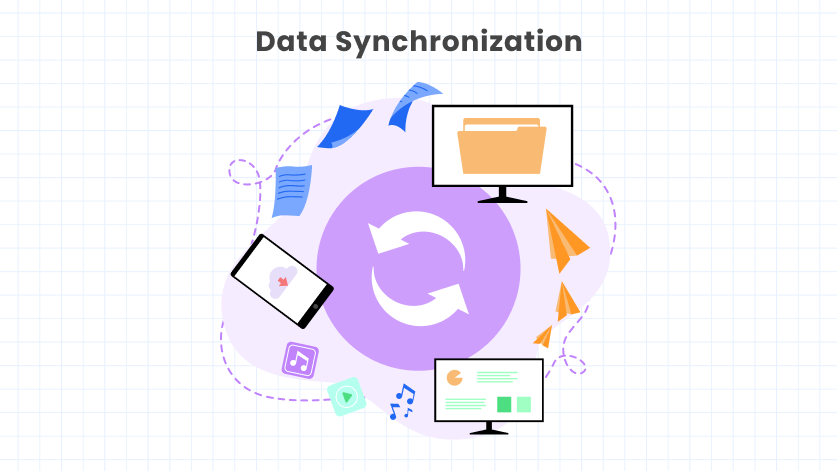
3. Data Quality Management: Implement data cleaning and validation processes to ensure the accuracy and completeness of your data, which is crucial for reliable automation.
4. Standardized Data Format: Implement consistent data formats across all your systems to avoid errors and ensure smooth data exchange.
2. Automation Workflows:
1. Trigger-Condition-Action: Define workflows based on triggers (e.g., new order, reduce abandoned cart), conditions (e.g., order value, customer location), and actions (e.g., send confirmation email, update inventory, trigger promotion).
2. Visualization and Mapping: Use visual workflow tools to map out these trigger-condition-action sequences for better planning and troubleshooting.

3. Scalability and Flexibility: Design workflows that can adapt to changing needs and business growth.
4. Workflow Builder: Choose a flexible workflow engine that allows you to easily design and implement automated workflows with drag-and-drop functionality and visual interfaces.
5. Error Handling and Exception Management: Build in robust mechanisms to handle unexpected situations and errors within the workflows to prevent disruptions and ensure smooth operation.
3. Automation Tools and Technologies:
1. Inventory Management Apps: The inventory management app automatically tracks stock levels, reorder points, low-stock alerts, and automatic purchase orders to maintain optimal inventory levels.
2. Order Processing and Fulfillment Tools: Automate order confirmation, invoice generation, shipping label creation, and integration with fulfillment providers for faster and more efficient order fulfillment.
3. Marketing Automation Tools: Automate email marketing campaigns, personalized product recommendations, social media scheduling, and lead nurturing for targeted customer engagement.
4. Customer Service Automation Tools: Utilize chatbot apps, automated FAQ responses, and ticket routing based on keywords or customer profiles to provide efficient and personalized customer service.
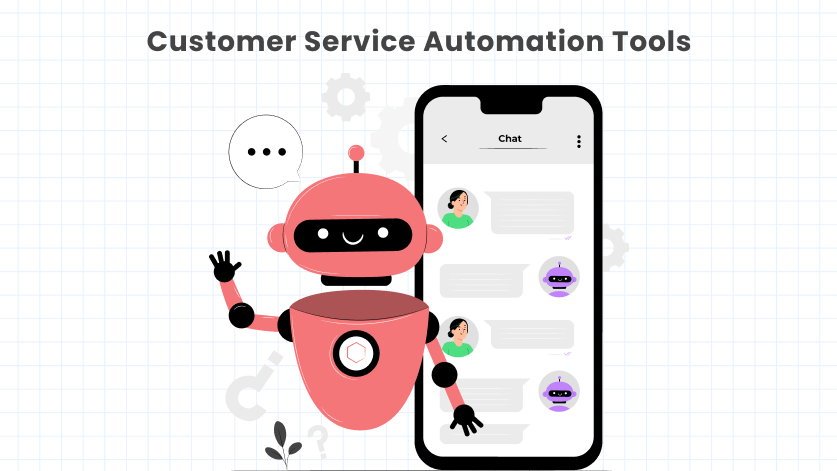
5. Analytics and Reporting Tools: Track the performance of your automated workflows and analyze the data to identify areas for improvement and optimize your automation strategy.
4. Process Optimization:
1. Performance Tracking: Track the performance of your automation efforts, including efficiency gains, error reduction, and customer satisfaction metrics.
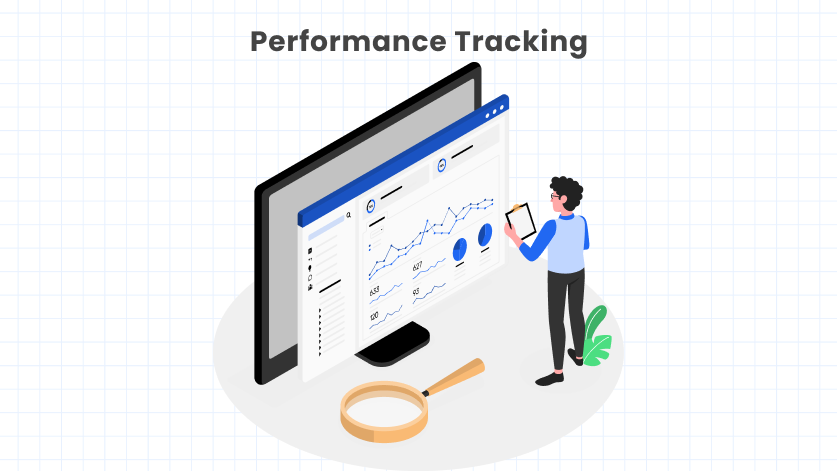
2. Identify Repetitive Tasks: Analyze your business processes and identify repetitive, manual tasks that can be effectively automated.
3. Streamline Workflows: Simplify and streamline your existing workflows before automating them to avoid replicating inefficiencies in the automation process.
4. Continuous Improvement: Monitor and evaluate the effectiveness of your automation, and continuously refine and optimize them based on data and feedback to ensure long-term success.
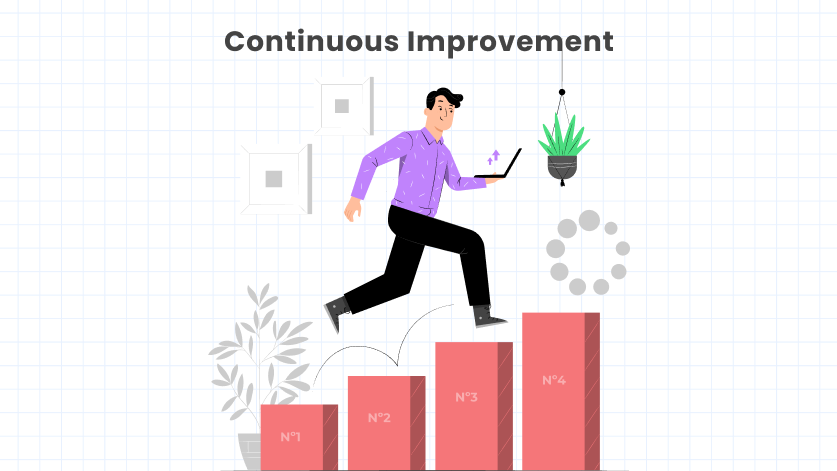
5. A/B Testing: Test different automation approaches to see what works best for your specific business and customers.

5. Security and Compliance:
1. Data Security: Implement robust data security measures to protect customer and business data within your automated systems.

2. Compliance with Regulations: Ensure your automation processes comply with relevant data privacy regulations and industry standards.
3. Regular Security Audits: Conduct regular security audits and penetration testing to identify and address potential vulnerabilities in your automated systems.
4. System Redundancy: Build redundancy into your systems to minimize downtime and ensure business continuity in case of technical glitches.
5. Disaster Recovery: Have a plan to recover from unexpected events, such as data breaches or system failures.
By focusing on these key components and taking a strategic approach, you can leverage automation to streamline your eCommerce operations, improve efficiency, and gain a competitive edge in the growing digital marketplace.
Remember, automation is a journey, not a destination. Continuous improvement and adaptation are crucial for maximizing the benefits of automation in your eCommerce business.
Statistics About Automating Your eCommerce Business:
- The global Business Process Automation (BPA) market size is expected to grow from $9.8 billion in 2020 to $19.6 billion by 2026. (Source: GlobeNewsWire)
- Adopting automation in sales and marketing can increase lead quantity by 80% and improve efficiency and marketing ROI by 45%. (Source: Oracle)
- 70% of the companies report that the most important benefit of automation technology is better-targeted customers. (Source: HubSpot)
- 2 out of 3 knowledge workers say automation has helped them be more productive at work. (Source: Zapier)
- 80% of marketing automation users see improved lead generation, and 77% see more conversions. (Source: Invespcro)
- 70% of the companies report that the most important benefit of automation technology is better-targeted customers. (Source: HubSpot)
- 40% of U.S. consumers use chatbots to engage with retailers. (Source: Siteefy)
- 31% of businesses have fully automated at least one function. (Source: McKinsey)
- 90% of knowledge workers say that automation has improved people’s lives in the workplace. (Source: Zapier)
- Nearly 70% of workers believe automation will bring opportunities to qualify for higher-skilled work. (Source: International Federation of Robotics)
- 50% of work can be automated in today’s age. (Source: McKinsey)
- 35% of SMBs say using automation allows them to provide better customer service and support. (Source: Zapier)
- Email marketing is the most often automated channel, named by 65% of marketers. (Source: Statista)
- 95% of customer-retailer interactions will take place on automated systems by 2025. (Source: Siteefy)
- Content marketing automation is the 12th most expensive keyword in the content marketing industry. (Source: Semrush)
Benefits of Automating Your eCommerce Business:
Automating your eCommerce business can offer numerous benefits that contribute to increased efficiency, cost savings, and improved overall performance.
Here’s a detailed explanation of some key benefits:
1. Increased Efficiency and Productivity:
- Free Up Your Time: Eliminate repetitive tasks like order processing, email responses, and inventory management, allowing your team to focus on strategic initiatives like marketing, product development, and customer engagement.
- Reduce Manual Work: Cut down on the need for manual data entry, calculations, and scheduling, minimizing errors and streamlining workflows.
- Faster Processing Times: Automate tasks like order confirmations, shipping updates, and product recommendations, improving customer satisfaction and order fulfillment speed.
- Boost Output and Speed: Automated workflows eliminate manual bottlenecks, resulting in faster order processing, quicker shipping times, and improved response to customer inquiries.
- Scale with Ease: As your business grows, your automation infrastructure can easily expand to accommodate the increased workload, ensuring smooth operations even with a higher volume of orders and customers.
- Faster Workflows: Automated processes eliminate manual steps and delays, leading to quicker order fulfillment, faster customer service responses, and improved overall operational speed.
- Reduced Errors: Human error is minimized through automation, leading to fewer order errors, inaccurate inventory levels, and missed deadlines.
2. Enhanced Accuracy and Reduced Errors:
- Personalized Interactions: Automation allows you to segment your customers and deliver targeted email campaigns, product recommendations, and promotions, fostering a more personalized and engaging experience.
- Eliminate Human Error: Automation removes the risk of human mistakes in tasks like data entry, inventory management, and financial calculations.
- 24/7 Availability: Automated workflows ensure essential tasks like order processing and shipping notifications occur even outside business hours, providing a seamless experience for customers.
- Proactive Customer Service: Chatbots and automated FAQ responses can provide instant support to your customers, resolving simple issues and offering 24/7 assistance.
- Standardize Processes: Ensure consistent execution of tasks with pre-defined workflows and rules, minimizing inconsistencies and inaccuracies.
- Improve Data Quality: Automate data cleaning and validation processes to maintain high data integrity, leading to better decision-making based on accurate information.
- Reduced Friction and Errors: Automated order confirmation, shipping updates, and invoice generation ensure a smooth and transparent buying process, minimizing customer frustration and errors.
3. Improved Customer Experience:
- Personalization at Scale: Deliver tailored product recommendations, targeted marketing campaigns, and dynamic content based on individual customer preferences and behaviors.
- 24/7 Availability: Utilize chatbots and automated support systems to offer instant assistance and answer frequently asked questions, enhancing customer satisfaction.
- Seamless Interactions: Automate order updates, shipping notifications, and returns processes to keep customers informed and engaged throughout their buying journey.
4. Competitive Advantage:
- Faster Time to Market: Automated product launch campaigns, inventory management, and order fulfillment can help you get new products to market faster, giving you a competitive edge in the ever-evolving online landscape.
- Improved Customer Loyalty: A seamless and personalized customer experience fostered by automation can lead to increased customer loyalty, satisfaction, and repeat purchases.
- Increased Brand Reputation: Efficient and reliable operations powered by automation can build trust and confidence in your brand, attracting new customers and enhancing your reputation in the market.
- Innovation and Agility: The time and resources saved through automation allow you to invest in innovative solutions and adapt to market trends faster, giving you a competitive advantage.
5. Scalability and Growth:
- Adapting to Increased Volume: Automated workflows can easily handle growing order volumes and customer base without requiring significant manual intervention, allowing you to scale your business efficiently.
- Focus on Strategic Growth: Freed from routine tasks, you can dedicate your resources to exploring new markets, developing innovative products, and implementing strategic growth initiatives.
- Data-Driven Decisions: Automation provides valuable data insights on customer behavior, operational efficiency, and marketing effectiveness, enabling data-driven decision-making for better growth strategies.
7 Best Practices for Automation in Your eCommerce Business:
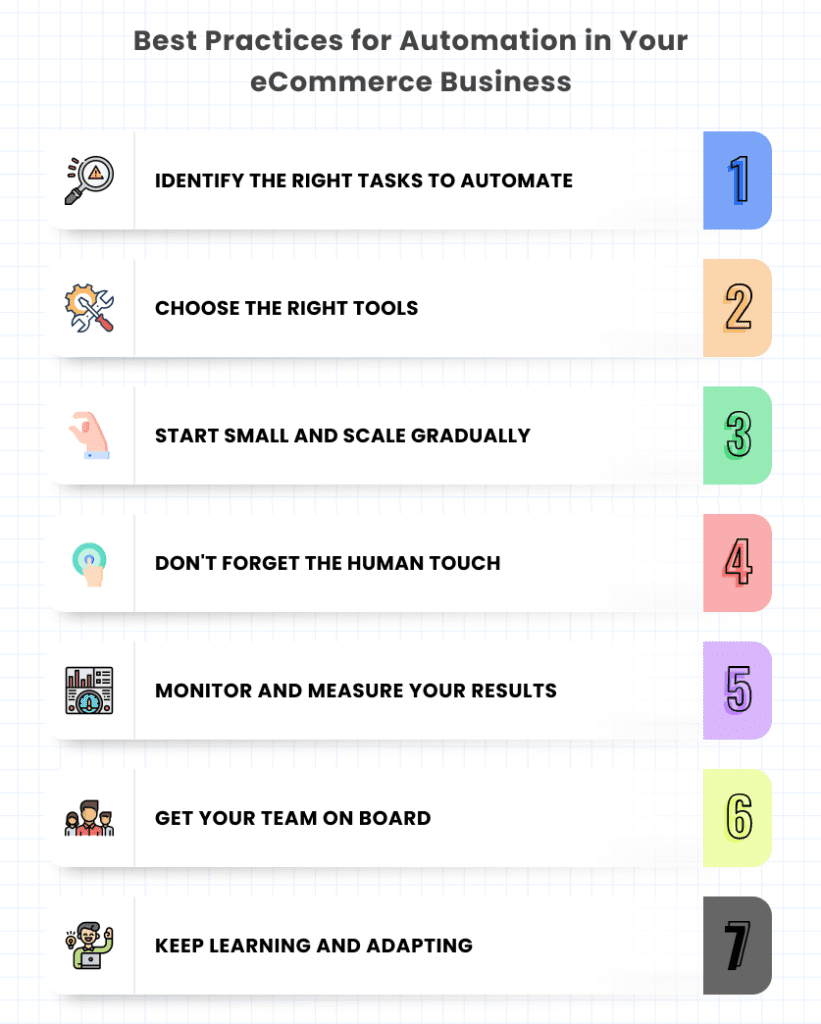
Automating your eCommerce business is no longer a luxury; it’s a necessity. By streamlining repetitive tasks and processes, you can free up your time and resources to focus on what truly matters – growing your business and providing an exceptional customer experience. But with so many automation options available, where do you start?
Here are 7 best practices to guide you:
1. Identify the Right Tasks to Automate:
Not all tasks are created equal. Some are better suited for automation than others. Focus on repetitive, time-consuming tasks that have clear and predictable outcomes.
This could include:
- Order Processing and Fulfillment: Automate order confirmation, invoice generation, shipping label creation, and fulfillment workflows.
- Inventory Management: Track stock levels, send low-stock alerts, and reorder products automatically.
- Customer Service: Respond to frequently asked questions (FAQs) with chatbots, provide order updates, and resolve basic issues automatically.
- Marketing and Sales: Send targeted email campaigns, personalize product recommendations, and manage social media accounts.
- Financial Management: Track income and expenses, reconcile accounts, and generate reports automatically.
2. Choose the Right Tools:
Once you’ve identified the tasks you want to automate, you need to choose the right tools. There are a variety of eCommerce automation tools available, so it’s important to choose ones that are:
- Easy to use: The tools should be user-friendly and intuitive, even for non-technical users.
- Scalable: As your business grows, you need tools that can scale with you.
- Integratable: The tools should be able to integrate with your existing eCommerce platform, CRM, and other business systems.
- Affordable: Choose tools that fit your budget and offer a good return on investment.
3. Start Small and Scale Gradually:
Don’t try to automate everything at once. Start with a few small tasks and gradually scale up as you get comfortable with the tools and processes. This will help you avoid overwhelm and ensure that your automations are actually working effectively.
4. Don’t Forget the Human Touch:
Automation is a powerful tool, but it’s important not to forget the human touch. Some tasks, such as handling complex customer service issues or building relationships with customers, are still best done by humans.
5. Monitor and Measure Your Results:
Once you’ve implemented your automation, it’s important to track your results and see how they’re impacting your business. This will help you identify areas where you can improve and ensure that your automation is delivering the desired outcomes.
6. Get Your Team on Board:
Change can be challenging, so it’s important to get your team on board with your automation plans. Explain how automation will benefit them and the business as a whole. Provide training and support to help them learn how to use the new tools and processes.
7. Keep Learning and Adapting:
The world of eCommerce is constantly changing, so it’s important to keep learning and adapting your automation strategies. As new tools and technologies emerge, be sure to evaluate them and see if they can help you improve your operations.
By following these best practices, you can ensure that your eCommerce automation efforts are successful and help you achieve your business goals.
By continuously learning, adapting, and improving, you can leverage the power of automation to take your eCommerce business to the next level.
Common Challenges of eCommerce Automation Business:
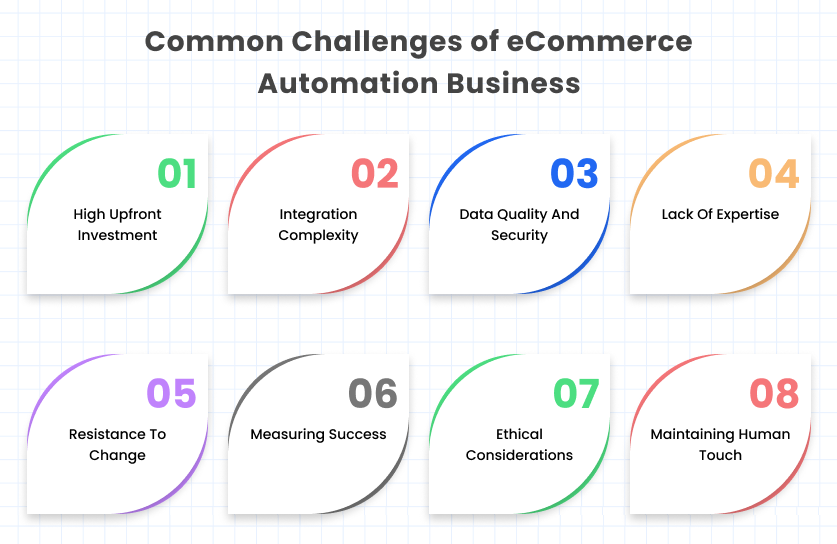
While automation offers numerous benefits for eCommerce businesses, it’s not without its challenges.
Here are some common hurdles you might encounter:
1. High Upfront Investment: Implementing automation tools and technologies can require a significant upfront investment, which can be a barrier to entry for smaller businesses.
2. Integration Complexity: Integrating various automation tools and platforms with your existing eCommerce infrastructure can be complex and time-consuming. This requires technical expertise and careful planning to avoid compatibility issues and data silos.
3. Data Quality and Security: Automating your business relies heavily on accurate and secure data. Poor data quality can lead to errors and inefficiencies, while data breaches can damage your reputation and cause financial losses.
4. Lack of Expertise: Implementing and managing automation effectively requires specialized skills and knowledge. Businesses may need to hire additional personnel or invest in training for existing employees to ensure successful automation.
5. Resistance to Change: Some employees may be resistant to automation, fearing job losses or changes to their daily routines. Effective communication and change management strategies are crucial to overcome resistance and ensure employee buy-in.
6. Measuring success: It’s important to have clear metrics to measure the success of your automation efforts. Without proper tracking and evaluation, it can be difficult to determine whether your automation is actually delivering the desired benefits.
7. Ethical Considerations: Automation raises ethical concerns, such as potential job displacement and biased algorithms. Businesses need to be mindful of these concerns and implement automation responsibly and ethically.
8. Maintaining Human Touch: While automation can streamline many tasks, it’s important to remember that the human touch is still essential for building relationships with customers and providing personalized experiences. Find ways to combine automation with human interaction to create a seamless and positive customer experience.
Understanding Shopify Automation in 2024
Shopify continues to redefine the parameters of success through its advanced automation capabilities. eCommerce automation in the current landscape goes beyond mere task delegation.
In 2024, Shopify Automation will encapsulate a comprehensive approach to optimizing business processes, from order fulfillment to customer engagement.
This sophisticated system aims to alleviate the burden of repetitive tasks, allowing businesses to focus on strategic initiatives.
Recent updates and features have propelled Shopify to new heights in automation, marking a significant stride towards efficiency and customer satisfaction.
Enhanced algorithms, backed by the global AI market’s projected growth of over $1.8 trillion by 2030, ensure that Shopify remains at the forefront of technological advancements.
These advancements empower businesses to automate their eCommerce processes seamlessly, with the global AI adoption rate standing at 35% as of 2022, representing a 4% increase over the previous year.
As the eCommerce landscape evolves, embracing Shopify’s cutting-edge automation features becomes a strategy and a necessity for those seeking to thrive in the highly competitive online market.
With over 97% of mobile users already leveraging voice search or AI-powered voice assistants, integrating Shopify’s advanced automation tools becomes pivotal in navigating the intricacies of modern eCommerce.
What are the Future Trends in eCommerce Automation?
The world of eCommerce automation is constantly evolving, with new technologies and trends emerging that promise to further revolutionize the way we shop online. Here are some of the most exciting future trends to watch:
1. Artificial Intelligence (AI) and Machine Learning (ML):
1. Personalized Product Recommendations and Marketing Campaigns: AI and ML will personalize the shopping experience to an unprecedented level, suggesting products tailored to individual preferences and purchase histories.
2. Conversational AI and Dynamic Chatbots: AI-powered chatbots will become more sophisticated, offering natural language interactions, resolving customer queries, and guiding them through the purchase process.

3. Predictive Analytics and Demand Forecasting: ML algorithms will analyze data to predict customer behavior and adjust inventory levels accordingly, minimizing stockouts and overstocking.
2. Hyper-Automation and Robotic Process Automation (RPA):
1. Automation of Complex Processes: Automation will extend beyond basic tasks, handling complex processes like order fulfillment, customer service, and marketing campaigns.
2. RPA Integration with Legacy Systems: RPA will seamlessly integrate with existing systems, automating tasks regardless of their level of technical complexity.
3. Self-Healing and Adaptive Workflows: Automated systems will become self-aware, identifying and correcting errors without human intervention and adapting to changing circumstances.
3. Voice Commerce and Multimodal Interactions:
1. Voice Search and Shopping: Shopping through voice assistants will become commonplace, requiring a focus on optimizing product descriptions and search functionality for voice queries.

2. Augmented Reality (AR) and Virtual Reality (VR) Product Experiences: Customers will be able to virtually try on clothes, furniture, and other products in their homes using AR and VR, leading to more informed purchase decisions and reduced returns.

3. Omnichannel Automation: Automation will bridge the gap between online and offline channels, providing a seamless and consistent customer experience across all touchpoints.
4. Blockchain and Decentralized Automation:
1. Secure and Transparent Supply Chain Management: Blockchain technology will ensure secure and transparent tracking of products throughout the supply chain, improving efficiency and traceability.
2. Decentralized Marketplaces and Autonomous Transactions: Blockchain could enable peer-to-peer marketplaces where transactions occur autonomously, potentially disrupting traditional eCommerce models.
3. Increased Data Privacy and Control: Customers will have more control over their data and can choose to share it with specific platforms or applications, leading to a more personalized and secure shopping experience.
5. Ethical Considerations and Human-Centered Automation:
1. Focus on Human-Centered Design: As automation evolves, it’s crucial to prioritize human needs and ensure that machines complement, rather than replace, human interaction.
2. Addressing Job Displacement and Reskilling: Governments and businesses will need to address potential job losses due to automation and invest in training programs to equip workers with the skills needed for a more automated future.
3. Transparency and Ethical Use of AI: AI algorithms and processes must be developed and implemented with transparency and ethical considerations, addressing issues like bias and discrimination.
Conclusion:
In conclusion, automating your eCommerce business is crucial for business growth in 2024, offering efficiency, cost savings, and improved customer experiences. Shopify’s advanced capabilities exemplify this, aligning with modern eCommerce demands.
Key components, such as data integration, workflows, tools, and security, form a comprehensive framework.
Future trends in AI, hyper-automation, voice commerce, blockchain, and ethics underscore the transformative nature of eCommerce automation. Despite challenges, strategic practices like starting small, choosing the right tools, and continuous monitoring help businesses overcome hurdles and leverage automation effectively.
Statistics highlight the global impact, emphasizing automation’s role in shaping the industry. The journey is ongoing, requiring a focus on employee training, maintaining the human touch, and ethical considerations.
Automation is not just a task simplifier but a strategic imperative for businesses to thrive in the dynamic eCommerce landscape, fostering efficiency, innovation, and customer satisfaction.
What will you do to automate your eCommerce business in 2024? Comment below!








